Organizations rarely suffer from a lack of data. Spreadsheets, dashboards, and reports overflow with numbers. Yet despite this abundance, decisions often stall, misfire, or fail to align with strategy. The problem isn’t the availability of data—it’s the absence of context.
A number without a story can mislead as easily as it can inform. Leaders may see that sales dropped, but without knowing whether it was seasonal, competitive, or operational, their response may miss the mark. Context turns numbers into insight, ensuring choices reflect reality rather than assumptions.
Lark delivers that missing context by connecting the tools teams use every day—documents, chats, workflows, and approvals—into a single system. Decisions are no longer made in isolation but supported by the full picture.
Lark Docs: adding narrative to numbers

Reports alone can’t answer the question why. A sales chart showing a dip is only the beginning; the real decision requires understanding the reasons behind it. Lark Docs allows teams to build that narrative directly into the workflow.
Docs function as a collaborative canvas where teams can co-edit in real time. Instead of passing static files through email, multiple stakeholders add insights simultaneously, creating a richer explanation behind the data. Version history ensures that edits are transparent and recoverable, so decision-makers can see how thinking has evolved. Docs also integrate context directly: Sheets with live data, Slides with visuals, and links to Wiki or Base records can all be embedded. This means the supporting evidence sits alongside the narrative rather than scattered across systems.
By combining hard numbers with human interpretation, Lark Docs transforms raw data into a story leaders can act on confidently.
Lark Wiki: keeping institutional context alive
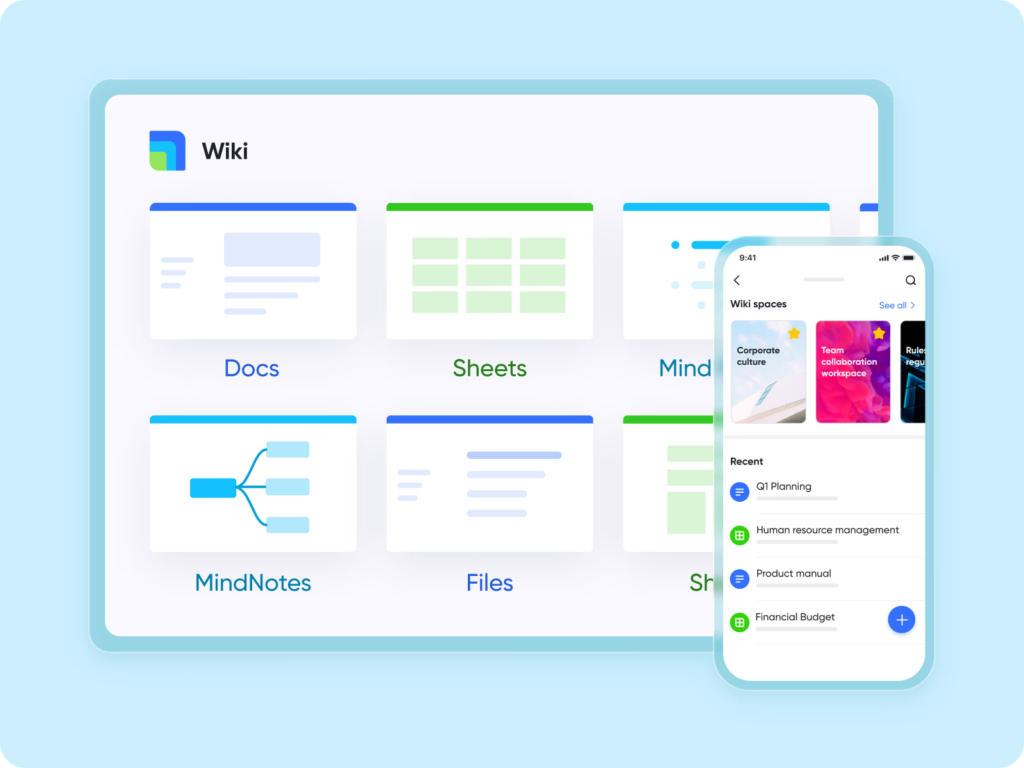
One of the biggest risks in decision-making is forgetting. Over time, the reasoning behind past choices disappears—lost in inboxes or locked away in personal folders. New leaders often find themselves asking, “Why did we decide this last year?” and no one remembers.
Lark Wiki prevents this erosion by becoming the organization’s living memory. Knowledge is stored in structured hierarchies, making it easy to find policies, playbooks, or project histories. Employees can use advanced search to instantly surface relevant insights, while permissions safeguard sensitive information. Analytics even show which pages are most used, helping teams prioritize what to maintain.
Because Wiki is continuously updated and linked with Docs and Base, context isn’t static—it grows as the organization grows. Leaders can revisit old campaigns, learn from missteps, and avoid repeating past mistakes. This continuity of knowledge makes smarter decisions the default rather than the exception.
Lark Messenger: capturing context as it happens
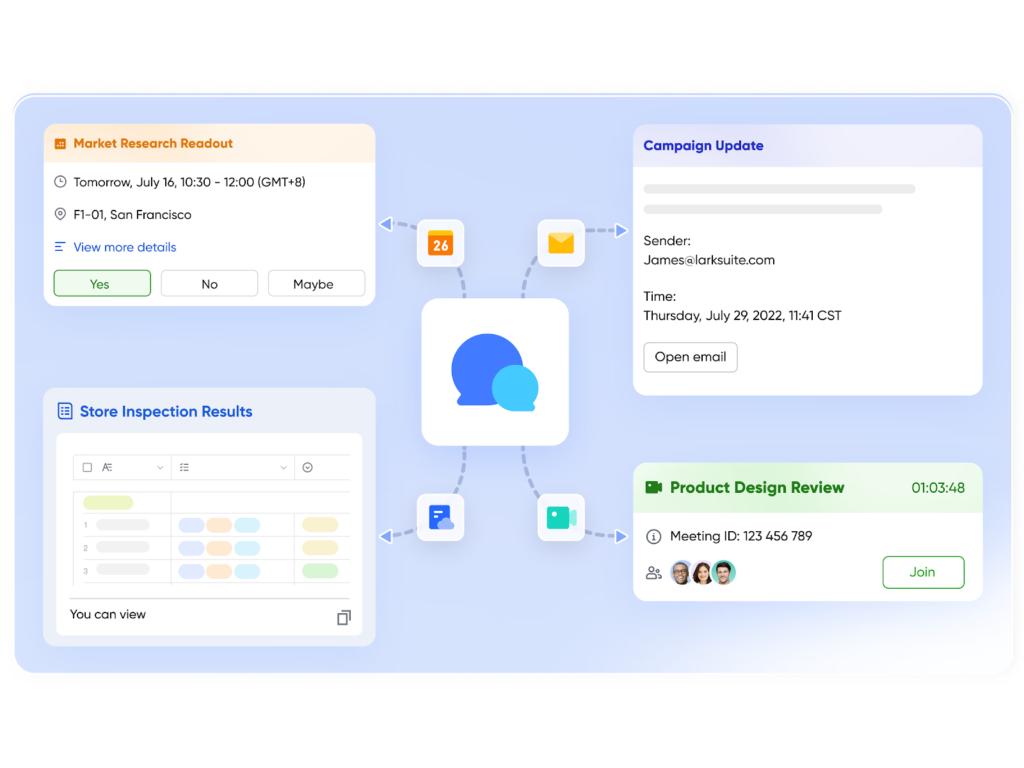
Some of the most important context is created in conversations. A manager’s offhand comment in chat may explain a delay; a quick discussion between teammates may highlight a hidden risk. But in fragmented communication systems, these insights vanish almost as quickly as they appear.
Lark Messenger keeps them visible and actionable. Threaded replies organize conversations so related decisions don’t disappear into endless streams. Buzz alerts elevate urgent updates, while pinned messages preserve instructions or priorities. The real breakthrough is that conversations don’t stay in Messenger—they convert directly into action. A chat thread can become a task on someone’s Calendar, a Doc for further planning, or an event scheduled instantly.
This ensures that the reasoning behind decisions travels with the work itself. Context captured in real time remains connected all the way through execution.
Lark Base: structuring decisions with clarity
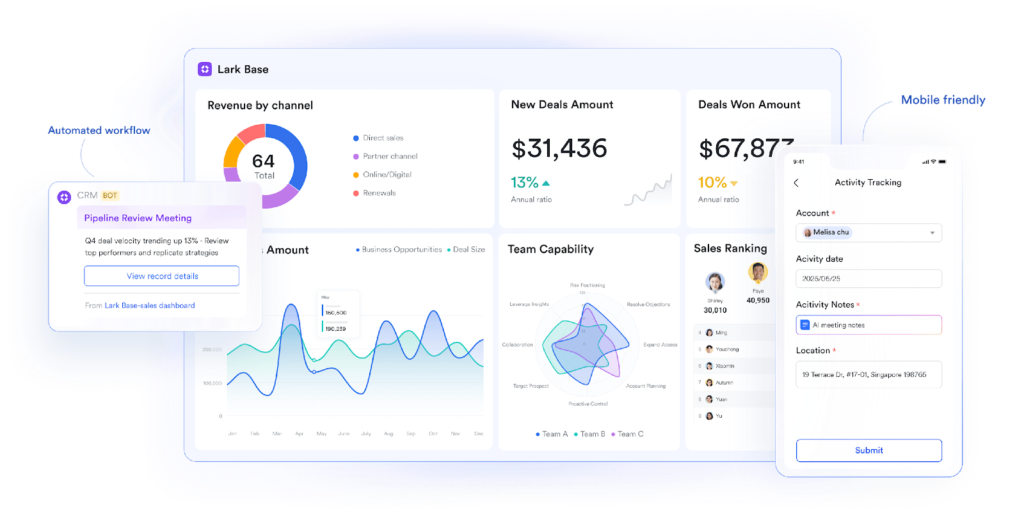
Data is only as useful as the structure around it. In many companies, decisions are slowed because numbers are scattered across trackers, spreadsheets, and project boards with no unified view. Lark Base eliminates this by giving teams adaptable ways to manage and interpret data.
Base offers multiple views—kanban boards, grids, Gantt charts, or galleries—so teams can choose the lens that makes sense for the decision at hand. Dashboards summarize key metrics, making it easier for leaders to spot risks or progress at a glance. Advanced fields allow critical context to be captured, whether that’s budget limits, ownership details, or dependencies across teams. Automations reduce human error by updating records, triggering reminders, or assigning tasks without manual input.
For many organizations, this flexibility makes Lark more than just a collaboration tool—it becomes their all-in-one CRM app. Instead of maintaining separate systems for customer tracking and project execution, they manage both in Base, where context between relationships and workflows naturally stays connected.
Lark Approval: decisions with built-in context
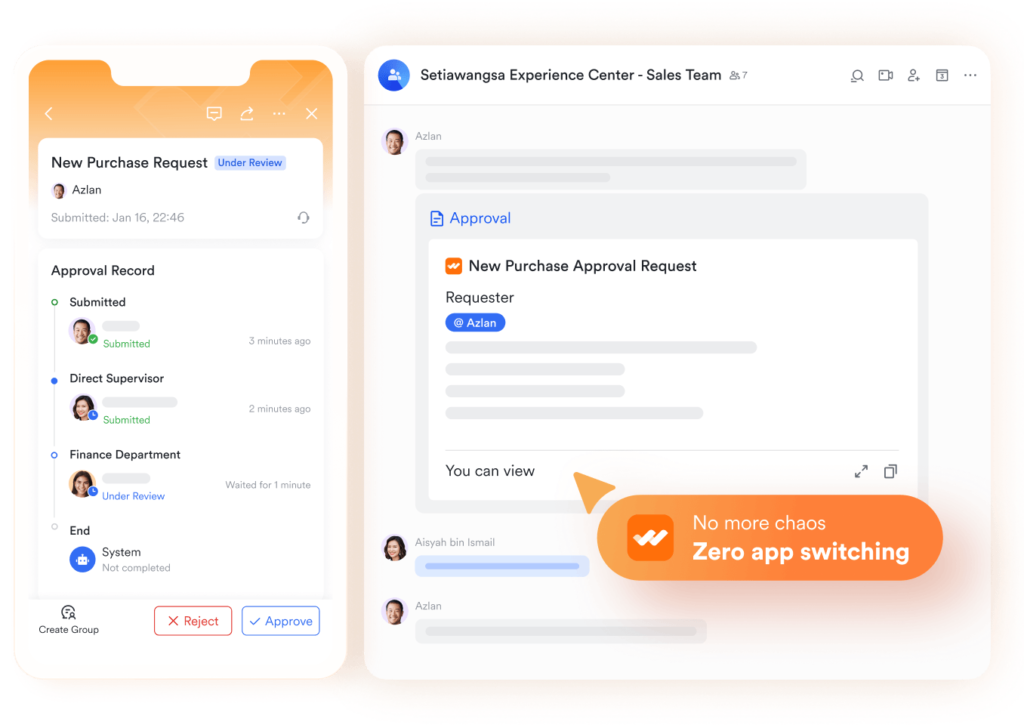
Approvals are where decisions often break down. A request buried in email might get approved without details, or worse, ignored altogether. Without the right context, approvals are either rubber-stamped or delayed, both of which harm progress.
Lark Approval ensures that every sign-off is informed and accountable. Customizable forms collect all required details upfront, reducing the back-and-forth that wastes time. Conditional routing automatically directs requests to the right decision-makers, so approvals don’t get lost in the wrong inbox. Notifications appear directly in Messenger, ensuring visibility, and every decision is synced back to Base for traceability.
Most importantly, Approval enables an automated workflow, meaning decisions flow smoothly into execution without manual follow-up. Leaders no longer approve in isolation—they approve with the full story in front of them.
Lark Calendar: the timing behind decisions
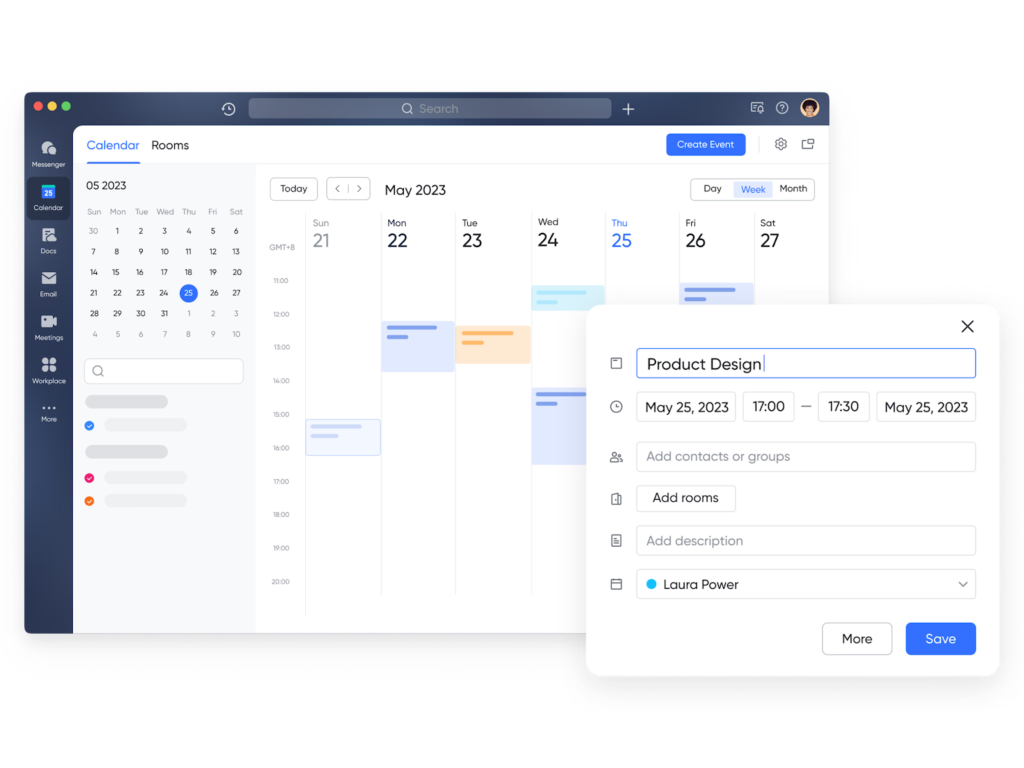
Context is not just about what you know, but also when you act. A decision made too early can be based on incomplete data; too late, and the opportunity disappears.
Lark Calendar provides the temporal context that drives smarter timing. Shared calendars reveal team availability, helping leaders coordinate without endless scheduling conflicts. Tasks are automatically synced into the calendar, making deadlines visible alongside meetings. Recurring events keep routine reviews consistent, while external sync ensures calendars from Google or Exchange remain unified.
This creates an environment where leaders don’t just know what decision to make—they know the right moment to make it.
Conclusion
Data without context is noise. Decisions without context are gambles. What separates high-performing organizations from struggling ones is not how much information they have, but how effectively they can place that information in context.
Lark makes context inseparable from work itself. Docs add narrative, Wiki preserves history, Messenger captures real-time reasoning, Base structures decisions, Approval ensures transparency, and Calendar adds timing. Together, these tools ensure no choice is made in a vacuum.
Among the wide array of project management tools, Lark stands apart because it functions as more than just a dashboard or tracker—it becomes the connected system of record, the workspace, and for many teams. And in an environment where every decision counts, that context is the difference between moving fast and moving smart.




